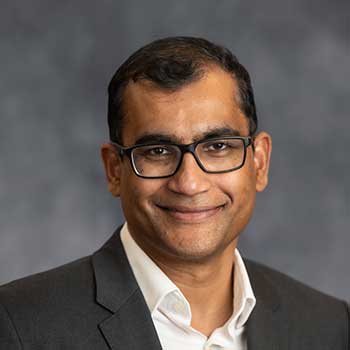U-M Aerospace Professor featured in report from National Academies of Science, Engineering, and Medicine
Professor Karthik Duraisamy served as a panelist discussing the use of digital twins in engineering.
Professor Karthik Duraisamy served as a panelist discussing the use of digital twins in engineering.

University of Michigan Aerospace Professor and Director of the Michigan Institute for Computational Discovery & Engineering (MICDE) Karthik Duraisamy is featured prominently in recent workshop proceedings from the National Academies of Science, Engineering, and Medicine (NASEM) covering Digital Twins in engineering. The workshop proceedings were also included in a broader NASEM report which surveys research gaps and future directions in Digital Twins.
The proceedings, which recap a workshop from earlier in 2023, summarizes the various plenary sessions that took place during the day’s events and outlines the opportunities and challenges for the emerging Digital Twin technology. This approach to engineering creates digital or virtual models of objects and environments to test how various factors are represented in an artificial environment.
Duraisamy, who represented the perspective of computational science and fluid dynamics applications in the first panel, was joined by panelists representing the automotive industry, manufacturing, aviation, and more.
During the discussion, Duraisamy commented on a wide range of topics covered in the first panel, including how to account for risk and uncertainty for varying levels of data collection, the “digital threads” that could make products more versatile, and how to enable a move from models to actions. For the latter point, the NASEM report summed up Duraisamy’s enablers for consideration to be, “uncertainty propagation, fast inference, model error quantification, identifiability, causality, optimization and control, surrogates and reduced-order models, and multifidelity information.”
Duraisamy sought to share his vision of what digital twins can be by classifying digital twins according to their decision and cognitive abilities. This takes the form of six levels of varying ability that allow Digital Twins to support different outcomes, including “assisting the ‘user,’” “empowering the ‘manager,’” and “defining the ‘organization.’”

Other panel topics during the day’s workshop included the use of Digital Twins for national security and renewable energy, and the use of Digital Twins in structural engineering. These discussions took place over a two-day public, virtual workshop on Feb. 7 and 9, 2023.